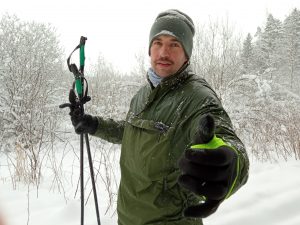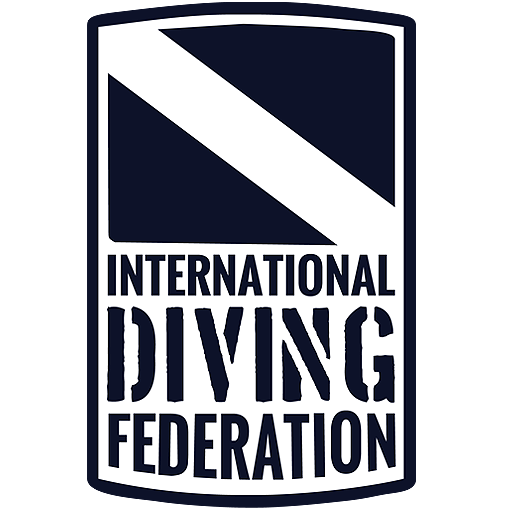In winter, many divers hide their wetsuits, give their cylinders to be legalized, and the remaining equipment is serviced or waits for warmer days. The frequency of diving trips drops dramatically due to weather conditions. Of course, divers do not fall into winter sleep until spring like bears. During this time, ice diving enthusiasts reign supreme at the dive sites, and if there is a lack of ice there are underwater teams who want to enjoy the clear and transparent water during the winter season.
Some divers spend this time traveling to warmer countries and there continue to practice their passion. Unfortunately, not everyone has the opportunity and time for such trips or has the appropriate equipment and qualifications to dive under the ice. So what should do the people who do not necessarily associate winter with diving, but still want to enjoy their favorite activity?
An excellent solution is swimming pool classes. However, this is not a novel solution. Many diving centers and clubs have been meeting for years at the pool during the winter season, where you can both brush up on your own diving skills and have fun.
The first step in organizing such activities is, of course, to find the right swimming pool. It should be as deep as possible. Depth gives more possibilities in terms of exercises and grading their level of difficulty, and allows you to make better use of your diving equipment. In general, a good pool for divers should be considered one with a depth of more than 3. 5 meters. Such pools are usually also equipped with a trampoline for jumping, so it is worth paying attention to this. Unfortunately, such facilities, especially in small cities or towns, are a big rarity and you will not find them everywhere. However, you should not worry too much about this, because with many exercises, depth can be converted into length, which will be effective for some activities in a shallower pool. If pool classes are conducted with people who are just getting their diving license a good pool depth, according to IDF standards, must be slightly less and be about 3 meters, and the bottom should be shaped in such a way that at the shallowest point it is enough to stand to find yourself with your head above the surface. In this case, virtually all pools meet the above requirements, which allows some parts of IDF Open Water Diver course or children classes to be held in winter as well.
Another issue to consider is the policy of the pool authority itself. Many pools have specific rules regarding the bringing and use of diving equipment as well as ABC on their premises, so it is a good idea to coordinate this case with the facility manager in advance. In practice, very often permission is granted to use such equipment in the pool area, but be sure that it is prepared for such a circumstance and clean, so as not to contaminate the water in which other people are swimming.
Although a swimming pool is a closed, controlled environment, one must not be forget: that it is still water, and therefore an element towards which respect must be maintained. History is full of cases of experienced freedivers who, practicing in the pool without belay, paid the ultimate price. The same safety rules should be observed as when diving in open water. It should be remembered that at shallow pool depths there is further risk of lung pressure injury caused by ascending too quickly. Therefore, any exercise should be done with a belay. It significantly increases the safety of exercisers, reduces the risk of accidents and forms correct habits.
We can divide exercises in the pool into two groups: apnea and in breathing equipment. The first group is based on working on the endurance and lung capacity of the diver. Above that, such exercises help to improve resistance to stress underwater, thereby increasing the efficiency of coping with gas emergencies. How to exercise? The possibilities are many. From swimming in ABC on the surface as well as under it, to fishing out objects, underwater field hockey to underwater obstacle courses of varying difficulty.
The second group of classes, as it has been mentioned, are exercises in breathing equipment. Their main task is to improve the knowledge of one’s own equipment configuration and related techniques, such as V-drill, S – drill, hover, etc. Those exercises helps to develop proper habits, such as when giving an automatic to a partner, and to practice rescue procedures. All of mentioned will usually involve static drills, similar to those performed on open-water training platforms.
At he end, it is worth mentioning one insanely important point. Regardless of the type of exercise, its level of difficulty should always be tailored to the participants. An exercise that is too difficult may result in an emergency situation, one that is too simple will not contribute much to diver’s development. The key to success is to know the capabilities of the group or your partner and gradually increase the level of difficulty. In this way, tasks that seem impossible for today will soon be within our reach. By adhering to these principles, winter will never again be a period of stagnation, but will allow you to get the most out of your pool activities.

About the author:
Daniel Poplawski is an experienced IDF Master Diver Instructor originally from Masurian Lake District (Poland). He is the author of many training presentations used by IDF instructors. With an MD in chemistry, Daniel applies his knowledge to the more rigorous aspects of diving, such as gas blending. Privately a fan of healthy living and activity with his responsible and enthusiastic attitude he infects new diving students.






